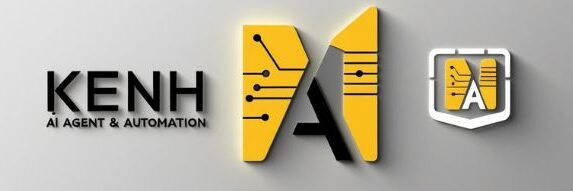Why Designers Should Use AI Workflows for Faster Results
The creative industry is being reshaped—and fast. While tools like Figma, Photoshop, and Illustrator still dominate the design stack, they’re no longer enough.
In 2025, top designers are not working harder—they’re working smarter with AI.
Enter AI workflows, powered by intelligent agents and the MCP (Multi-agent Collaborative Process) framework. This new way of working is slashing production times, improving iteration quality, and giving designers more space to focus on what really matters: creativity.
In this article, we’ll explore why and how designers should adopt AI workflows—plus the tools to start using right now (for free).
1. The Rise of AI Agents in Creative Work
Design used to be purely human. Today, AI agents can handle everything from idea generation to asset creation, layout suggestions, and client feedback interpretation.
These agents are modular—each focused on a specific task:
Ideation agent suggests design directions based on trends
Content agent writes copy (landing pages, banners, taglines)
Image agent creates concept art or product mockups
Review agent checks for design consistency or UX conflicts
Powered by Claude AI, GPT-4.5, AutoGPT, and tools like Leonardo or Recraft, these agents form automated workflows that streamline even the most complex design tasks.
2. Workflow Automation: The Digital Future of Design
What is a Design Workflow with AI?
It’s a step-by-step automation that takes a creative brief and transforms it into outputs like:
Moodboards
Logos
Landing pages
Brand kits
Social graphics
And it’s done through smart collaboration between AI agents.
Example AI Design Workflow (MCP-Based):
| Step | AI Tool | Agent Role |
|---|---|---|
| 1. Brief Understanding | Claude AI | Interprets client input |
| 2. Moodboard Creation | Leonardo.AI | Generates reference visuals |
| 3. Copywriting | GPT-4.5 | Writes text for landing page / ad |
| 4. Layout Suggestions | AutoGPT + UI agent | Suggests structure based on trends |
| 5. Final Review | GPT or Claude | Checks for tone, alignment, UX |
| 6. Delivery | AutoGPT | Prepares package for export |
Instead of doing each step manually, the designer oversees the system—reviewing, refining, approving.
3. MCP Framework: Why It Matters to Designers
MCP (Multi-agent Collaborative Process) is the architecture behind the most effective AI workflows.
Here’s why it fits perfectly with design work:
🎯 Parallelized Thinking: Multiple design “thoughts” can run at once
🔄 Feedback Loops: Agents can refine each other’s output
📁 Memory: Brand guidelines, previous projects, and client feedback persist across projects
⚙️ Custom Logic: You define the steps once, and the system reuses it across clients/projects
Designers don’t need to code this. Platforms like MagicLight offer no-code interfaces to build such agent systems quickly.
4. Best AI Tools for Designers (Free & Fast)
Here are the best free tools you can integrate into your AI design workflow:
🧠 Claude AI (via MagicLight)
Analyzes briefs
Interprets client feedback
Suggests tone and branding guidelines
✍️ GPT-4.5 (via Bing or Poe)
Writes website copy, banners, CTA buttons
Generates FAQs, product descriptions
Polishes UX microcopy
🎨 Leonardo.AI
Midjourney-level visuals, completely free
Prompt-based concept art, logos, product mockups
✏️ Recraft
Vector-based AI design
SVG + PNG export for logos, UI components, infographics
⚙️ AutoGPT or AgentHub
Automates the entire design system
Connects copy, images, and layout suggestions in one flow
5. Top 5 Reasons Designers Should Use AI Workflows
1. 🔥 Speed Up Delivery Time
Generate entire brand kits in hours instead of days. Automate tedious steps like:
Initial drafts
Copywriting
Re-sizing assets
Client feedback iteration
2. 🎯 More Accurate Design Iterations
AI agents trained on guidelines can:
Catch off-brand color use
Suggest layout improvements
Predict engagement based on past campaigns
3. 🧠 Reduce Cognitive Load
Focus on high-value creative thinking while AI handles:
Research
Formatting
QA
4. 💡 Get Creative Inspiration On-Demand
Use AI to generate:
Moodboard styles
Typography pairings
Landing page structures
Product shots with custom backgrounds
5. 💸 Cut Costs Without Sacrificing Quality
Freelancers and agencies can deliver premium-level work with fewer tools, fewer revisions, and faster cycles.
6. Real Use Case: Branding Agency Workflow (MCP Model)
Let’s imagine a boutique agency using MCP-style AI workflows:
Client Brief:
Create branding for a new wellness tea startup
AI Workflow:
| Task | AI Agent | Tool |
|---|---|---|
| Interpret brand tone | Strategist Agent | Claude AI |
| Generate names + slogans | Naming Agent | GPT-4.5 |
| Visual mockups | Designer Agent | Leonardo.AI |
| Copywriting (ads, web) | Writer Agent | GPT-4.5 |
| QA branding alignment | Brand QA Agent | Claude AI |
| Export & package | Delivery Agent | AutoGPT |
Result: Full brand kit ready in < 24 hours
7. The Designer’s Role in an AI Workflow World
AI doesn’t replace designers.
It replaces the design grunt work.
Your new role?
Architect workflows
Review outputs
Add human intuition
Manage creative direction
Designers are now creative directors working with AI teams, not isolated artists.
🎨 Ready to build your own design AI workflow?
Start for free with Claude AI, GPT-4.5, Leonardo AI, and AutoGPT—fully integrated inside MagicLight.
👉 Explore now and automate your next creative project.

